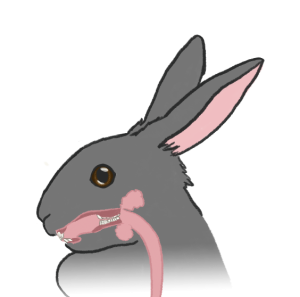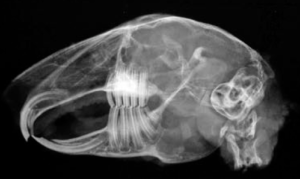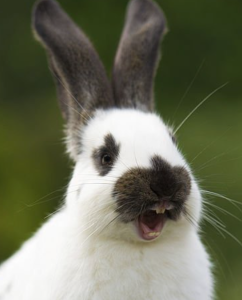3 The Teeth That Keep Growing and Growing and Growing and…
Digestion begins in the mouth…

The function of teeth is to physically break down food into smaller pieces.
Rabbits have aradicular hypsodont teeth. Unlike human, dogs and cats, rabbits have teeth that continue to grow throughout their lifetime. They have an “open root,” so they do not have a defined root, which allows them to constantly replace the part of the tooth that gets worn down as they eat the rough fiber of their diet (i.e. hay.) Other animals with teeth in this category include guinea pigs and chinchillas.

When a rabbit chews hay, they chop it up with their sharp incisors (their front teeth) and then grind it down with their “cheek teeth,” a group of molars near the back of the mouth that grind down the plant material to be swallowed. Chewing food increases the surface area thereby increasing the rate of reaction with digestive enzymes. Salivary glands filled with saliva and enzymes to start breaking down starch to convert it into sugar. The saliva also provides lubrication for the food to go down the esophagus, the tube of muscle that connects the mouth to the stomach.

A lot can go wrong when your teeth can’t stop growing. These bunny rabbits need constantly eat hay to wear down their teeth, but what happens if they don’t have enough access to hay, or if their teeth are misaligned?
Rabbits that don’t get enough fiber/hay run the risk of overgrowing their teeth. The teeth will often wear down unevenly, causing sharp spurs on the cheek teeth that cut into the tongue and cheeks.

Malocclusion (misaligned teeth) can lead to overgrown teeth, making it difficult or even painful for a rabbit to chew their food. The rabbit could be getting the adequate fiber they need in their diet, butthe misalignment of their teeth prevent them from grinding them down. Either condition can cause the rabbit to stop eating, which is an emergency situation that needs immediate attention. You will learn more about this later on in the book.

